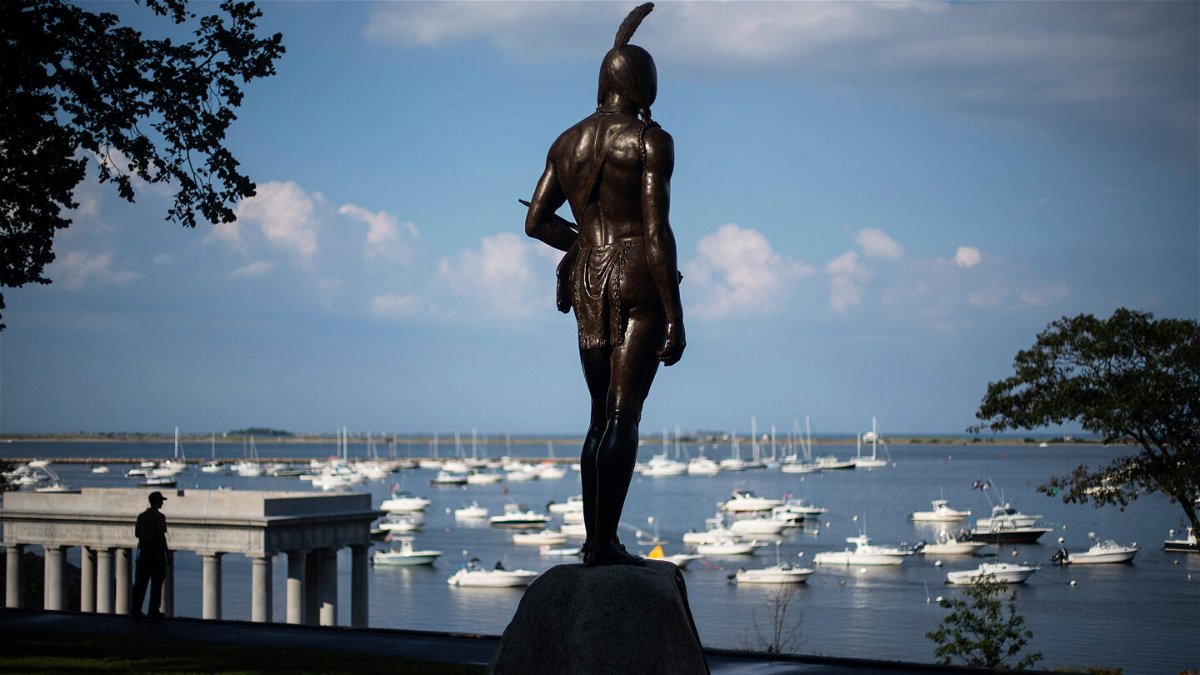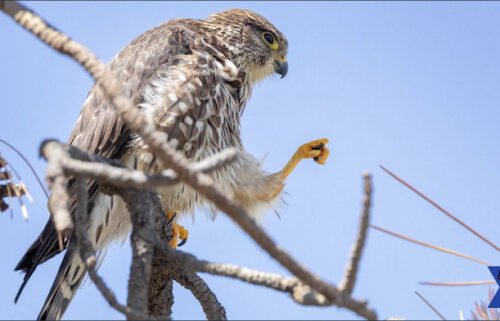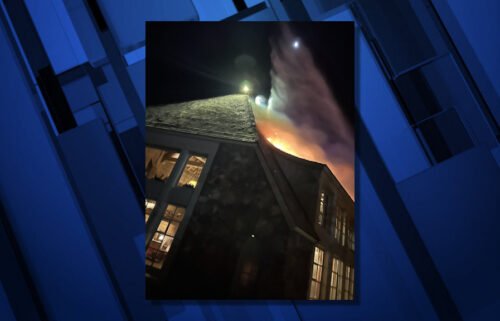National Day of Mourning turns Thanksgiving into something more honest

Massasoit was a leader of the Wampanoags at the time of the Pilgrims' arrival.
By Brandon Tensley, CNN
A version of this story appeared in CNN’s Race Deconstructed newsletter. To get it in your inbox every week, sign up for free here.
There’s little similarity between the actual harvest feast in 1621 that eventually inspired Thanksgiving and the event’s commemoration in popular culture.
Historians doubt that anyone ate turkey. The Wampanoags’ alliance with the Pilgrims was less about forging community than about ensuring survival at a time of tremendous change. And, initially, the pious newcomers didn’t even invite the Wampanoags to the revelry.
More sobering still, the yarn often spun in the US doesn’t mention the fact that Indigenous people’s encounter with English colonists was marked by incalculable loss from everything from genocide to disease and theft of land.
“As a holiday, Thanksgiving began in 1637 when it was proclaimed by governor John Winthrop of the Massachusetts Bay Colony to celebrate the safe return of the men who had gone to fight against the Pequot in Mystic, Connecticut,” the journalist Matt Juul noted in 2014.
Juul explained, “The fighting led to the enslavement and massacre of over 700 men, women and children from the New England-based tribe, a bloody precursor to what would be centuries of strife for Native peoples in the US.”
For a long time now, Indigenous people have been fighting to set the record straight.
Established in 1970, National Day of Mourning turns the fourth Thursday of November into something more honest. Many Indigenous people use the day not only to remember the suffering inflicted in the 1620s but also to point out the struggles that Indigenous people continue to face today in the form of, on top of so much else, violence against women and girls.
Here’s more about this radical act of reclamation:
What are the origins of National Day of Mourning?
The day came about unexpectedly. In 1970, coordinators for the 350th anniversary of the Mayflower landing asked a respected Aquinnah Wampanoag activist named Wamsutta Frank James to speak at the banquet they were planning. (There are two federally recognized tribes of Wampanoag people: the Mashpee Wampanoag Tribe and the Aquinnah Wampanoag Tribe.) But the invitation hinged on one condition: He had to hand over a copy of the speech in advance.
“It is with mixed emotion that I stand here to share my thoughts,” Wamsutta Frank James wrote. “This is a time of celebration for you — celebrating an anniversary of a beginning for the White man in America. A time of looking back, of reflection. It is with a heavy heart that I look back upon what happened to my People.”
The speech, which recalled horrors such as Europeans’ enslavement and murder of Indigenous people, left the planners stunned.
“I think that they wanted a token Native, and I think that they were expecting him to sing the praises of the Pilgrims — to thank them for bringing ‘civilization’ to these shores,” Kisha James, Wamsutta Frank James’ granddaughter, told CNN. “They said that he couldn’t give that speech because it was too inflammatory and that they’d write him a new one. But he refused to have words put in his mouth.”
Deciding that this history was too significant for the country to ignore, Wamsutta Frank James joined with other Native people to create a “National Day of Mourning” as an Indigenous response to the Thanksgiving holiday.
“Really, what we’ve been doing on National Day of Mourning every year since 1970 is telling the truth, explaining why we don’t give thanks for what happened in the 1620s or afterward, up until the present day,” said Mahtowin Munro, who is Lakota and the co-leader of the United American Indians of New England.
What happens on National Day of Mourning?
The day is a blend of commemoration and protest. Participants meet at noon on the fourth Thursday of November at Cole’s Hill, which is above the Plymouth Harbor area where Plymouth Rock lies. Also located there is a statue of Ousamequin, or Massasoit, who was a leader of the Wampanoags at the time of the Pilgrims’ arrival.
Those gathered on the hill start with an unrecorded spiritual ceremony. Afterward, participants attend a rally where speakers talk about a variety of issues. There’s at least one person who recounts the history of National Day of Mourning. Following the rally, participants march to Plymouth Rock for a second demonstration.
“There, we talk about how, in the words of Malcolm X, ‘we didn’t land on Plymouth Rock. Plymouth Rock landed on us,'” explained Munro, referring to how, for Indigenous people in the region, the 1620s marked the start of colonization (or “the beginning of the end,” as Wamsutta Frank James wrote in his suppressed speech).
Then, participants march to an area of Plymouth known as Post Office Square. It’s where colonists displayed on a pike the severed head of Metacom, a revered Wampanoag leader who attempted to unite all Indigenous people against the English.
Though National Day of Mourning faced pushback in its early years, the event has gathered more and more momentum over the decades.
“I would say that, overall, people have become more aware that there’s something wrong with the Thanksgiving myth and that there’s this protest that happens every year in Plymouth,” Kisha James said. “And that’s reflected in our numbers. The first National Day of Mourning was about 150 to 200 people, which was actually pretty good for 1970. Now, we get between 1,500 and 2,000 annually. We also have a live stream so that people from all over the world can watch National Day Mourning.”
Is National Day of Mourning only about the past?
No. Contemporary issues inform many of the speeches. Consider this year’s observation of National Day of Mourning.
“We’ll have a speaker from a tribal community in Louisiana that has been severely impacted by climate collapse, and specifically by Hurricane Ida,” Munro said. “We’ll have somebody who’s just come back from COP26 talk about how Indigenous people were largely excluded from that (the event) and how world leaders are refusing to listen to what Indigenous people everywhere are saying about what needs to be done to address climate justice.”
Other issues will receive attention, too, including pipeline resistance, the crisis of missing and murdered Indigenous women, girls and Two-Spirits, and the Land Back movement.
“Sometimes, I think that non-Native people picture us as being stuck, historically. They think of us as being stuck in the past,” Munro said. “But while we talk about our history — because if we don’t, it would be completely erased — we’re active in our resistance and in what’s happening now.”
Kisha James echoed some of these sentiments, and in particular emphasized the importance of realizing that history is never history.
“There’s a tendency not to understand that the past actually has consequences for the future,” she said. “There’s a tendency to acknowledge that what the Pilgrims did was bad but then act like everything’s fine now.”
The long, brutal history of state suppression of Indigenous voices motivated the founders of National Day of Mourning to allow only Indigenous people to speak at the event.
“The elders started that (having only Indigenous speakers) in 1970. They said that it’s because every other day of the year, we’re silenced or we have White people speaking for us — as if we’re incapable of speaking for ourselves,” Munro explained. “They said that people need to stop for at least one day a year and just listen to Indigenous people. We also believe that non-Native people need to listen to Indigenous voices regularly, especially to understand true solutions to the climate crisis being offered by the original caretakers of the land.”
The-CNN-Wire
™ & © 2021 Cable News Network, Inc., a WarnerMedia Company. All rights reserved.
What’s on your mind? 2021 has been a year. What questions do you have about the political and cultural battles that await us in 2022? We want to hear from you and prepare for the new year together. Email us at racedeconstructed@cnn.com by November 30 and your question could be featured in a December issue.



